- Pvtistes tip: Pukeko is taller with black feathers; takahe is chunkier with blue and green feathers and cannot fly.
- Both are small birds with large heads, but robins have longer legs; both aren’t too afraid of humans and are easy to spot.
- Neither has wings; kiwis have a darker coat, longer beak, and thicker legs; the weka is seen day and night and not frightened by humans, whereas kiwi are nocturnal and shy.
- Wings, hunting and size differ: harriers fly with V-shaped wings, are seen on roadsides and have a wingspan around 1 metre, while falcons glide with straight wings, hunt live prey, and are generally smaller.
How to tell the difference between certain NZ animals
Pukeko and takahe
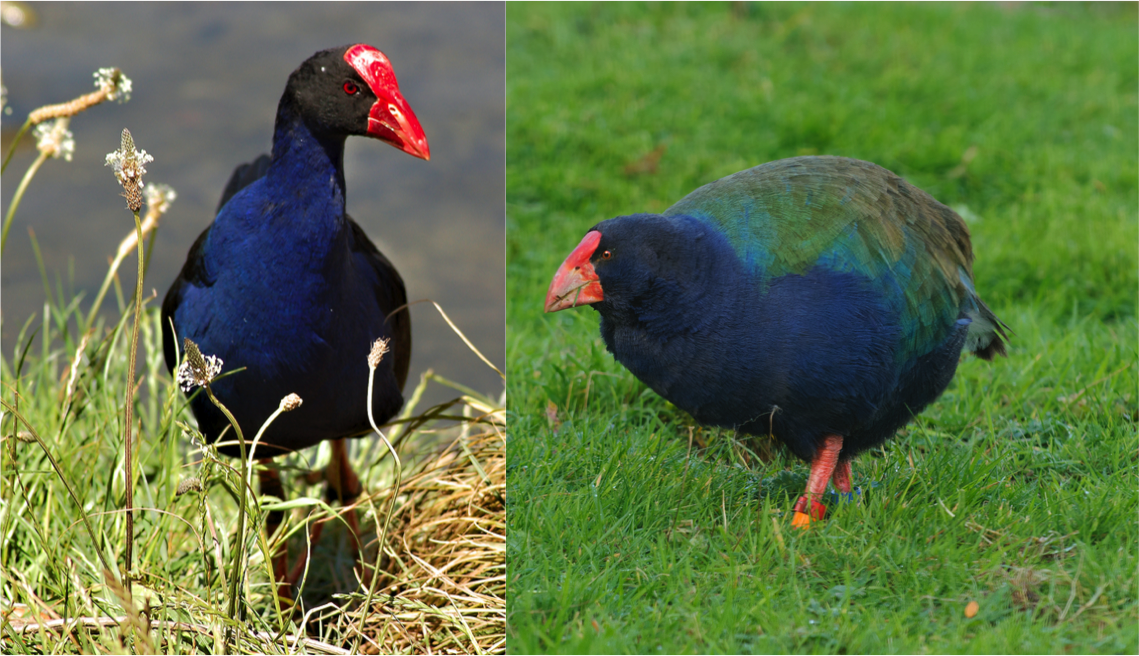
Even though they both have a red beak and a blue part of their body, it is still quite easy to recognise the differences. The pukeko (left) is taller with black feathers, while the takahe (right) is chunkier and its feathers are blue and green. The takahe is much rarer than the pukeko and it cannot fly.
Tomtits and robins
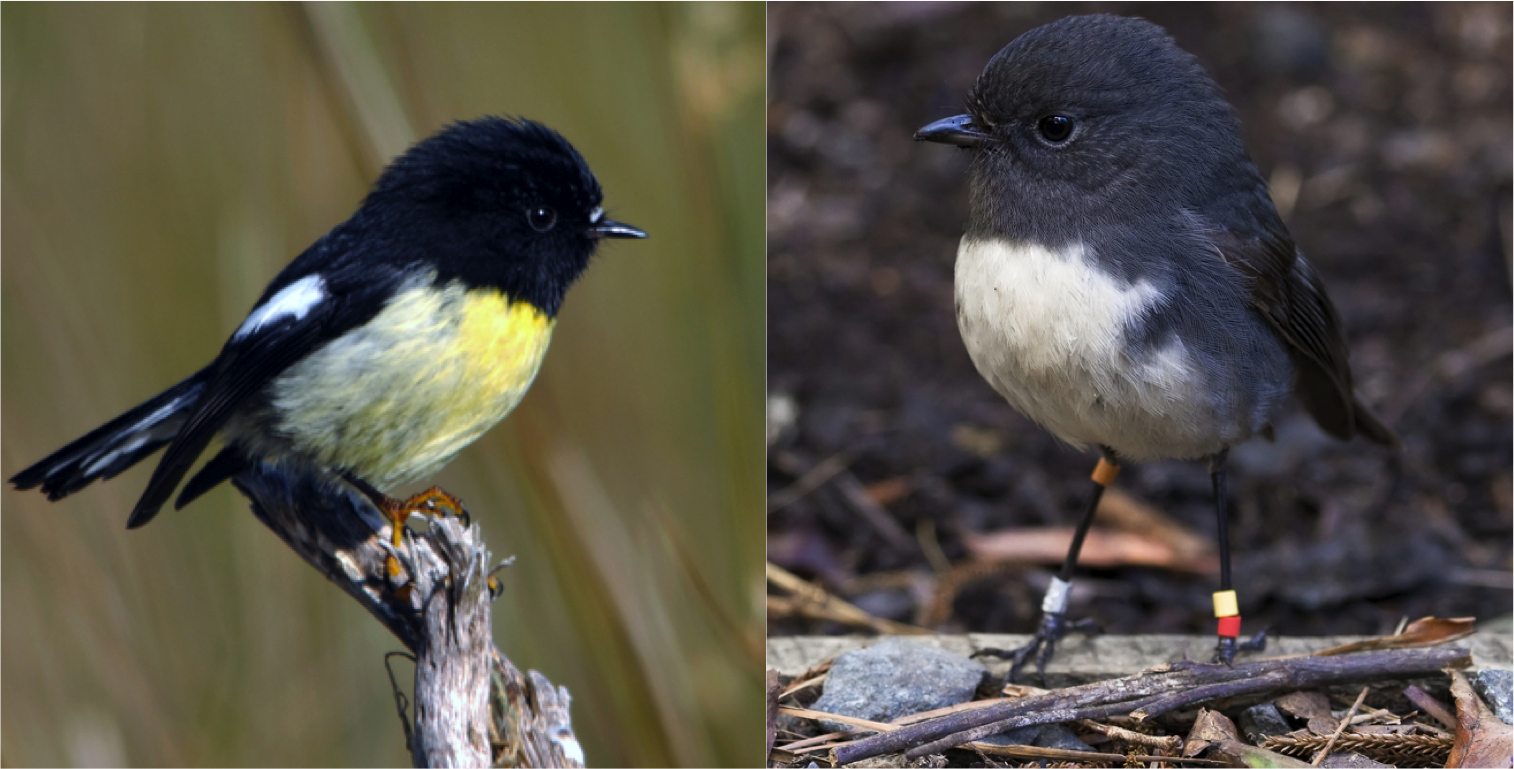
The tomtit (miromiro) and the robin are both small birds with large heads, a round neck and body. However, robins have longer legs than those of the tomtits. Both are not too afraid of humans and it should be easy to see some during your stay.
Kiwi and weka
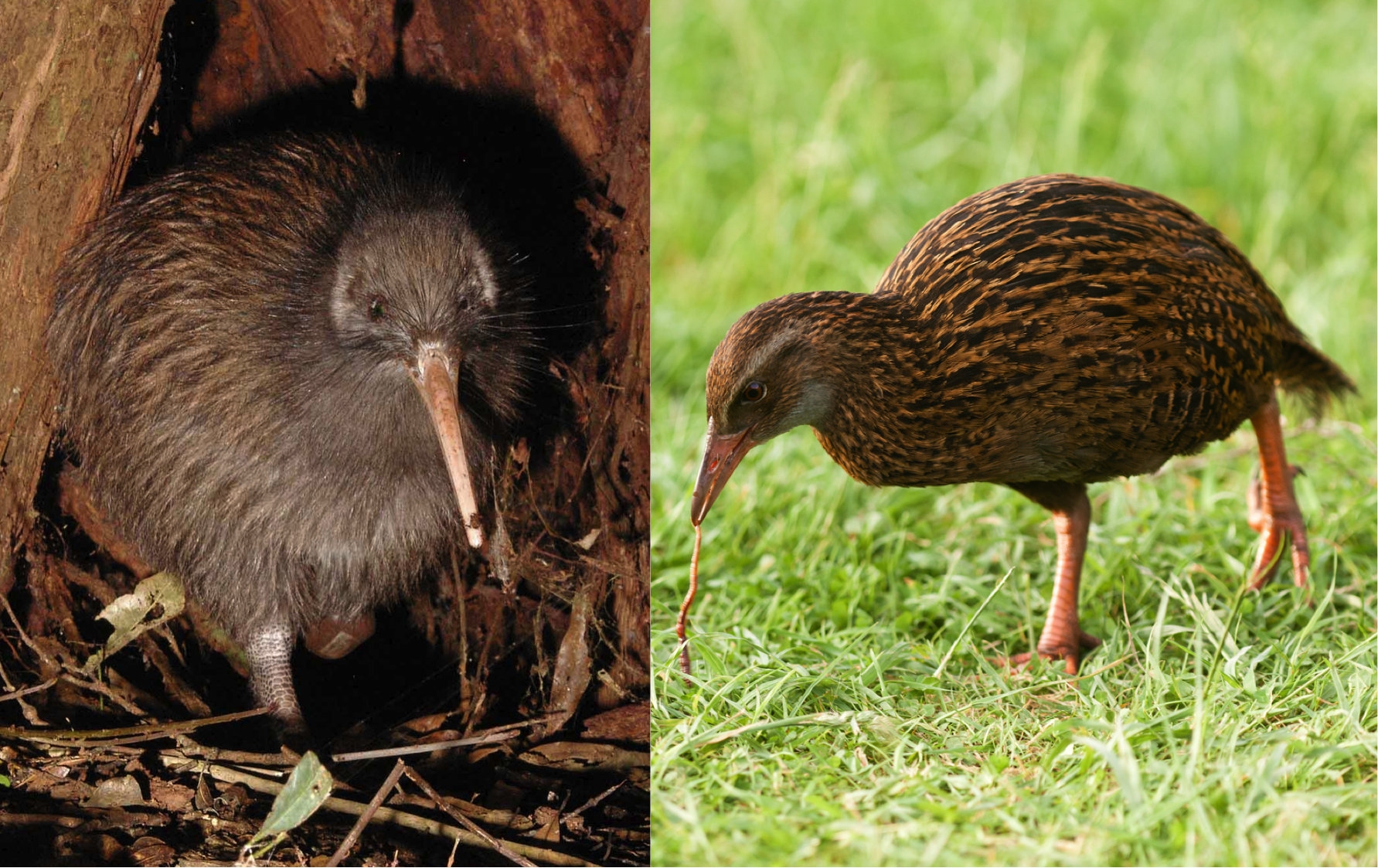
Some people often think they have seen a kiwi after seeing a weka, but once you know the differences, it’s easy to tell the difference. Both birds have no wings. However, the kiwi is distinguished by a darker coat, a longer beak and thicker legs. It is also possible to distinguish them thanks to their behaviour. The weka can be seen day and night and is not frightened by the presence of humans, whereas kiwi are nocturnal and shy.
The New Zealand falcon and the harrier
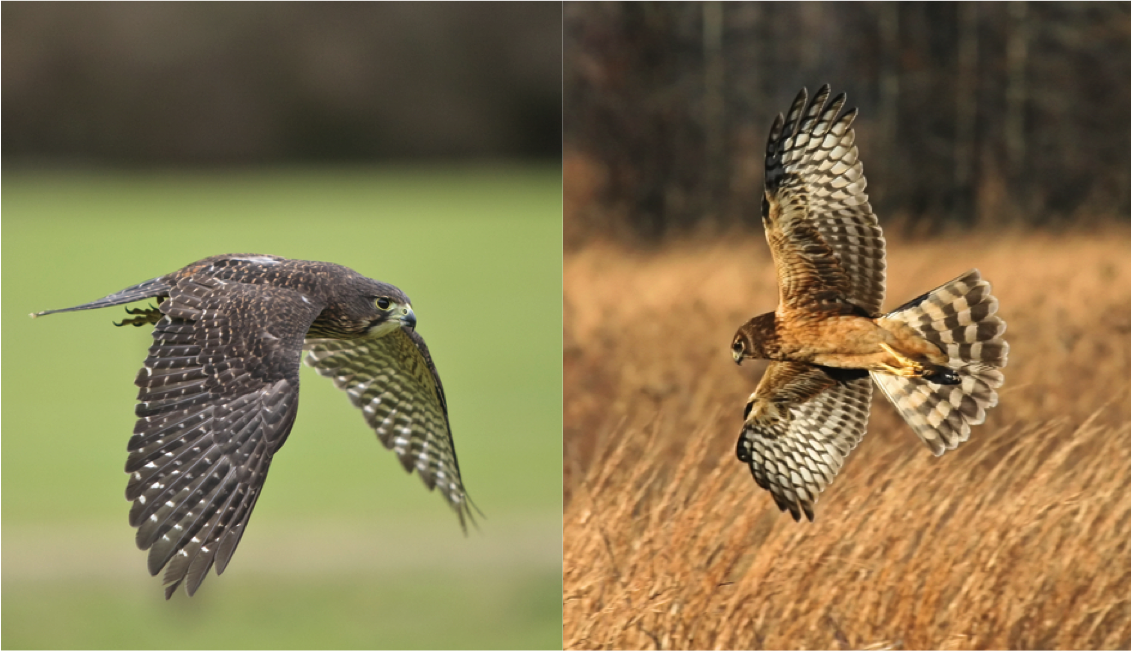
Wingspan gives you five ways to tell a New Zealand falcon from a harrier:
- The hawk is usually seen hunting small birds with rapid wing movements. The harrier, on the other hand, is more commonly seen on the ground, searching for dead animals and small prey.
- The harrier flies with V-shaped wings and tilts slightly depending on the air currents. The falcon glides with straight wings and close to the ground, trying to surprise its prey, or gliding high in the sky to monitor the horizon.
- Harriers are often seen feeding on roadsides. Hawks focus exclusively on live prey and are rarely seen at the roadside.
- Harriers are larger than falcons with a wingspan of 1 metre and a height of 50 centimetres. Falcons have smaller wings and are much smaller in height (about the size of a large magpie).
- Harriers and hawks differ in plumage and colours.












 Français
Français English
English







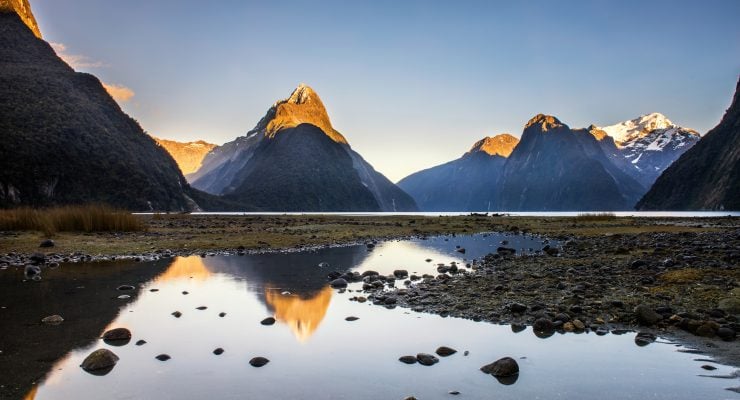
0 comments
{{like.username}}
Loading...
Load more